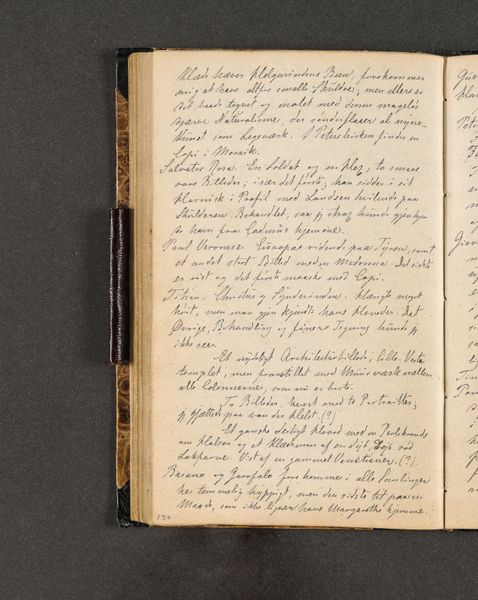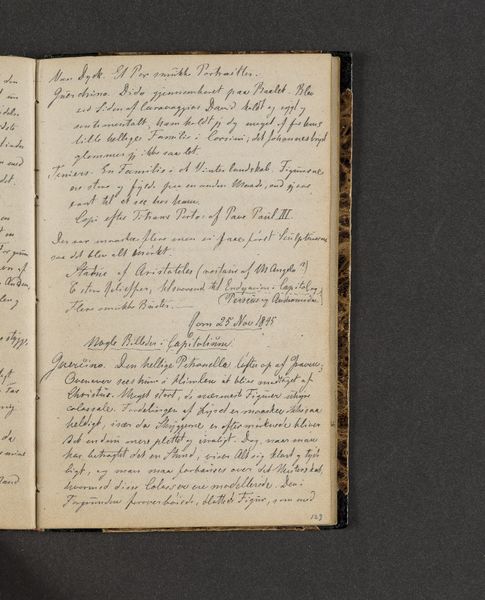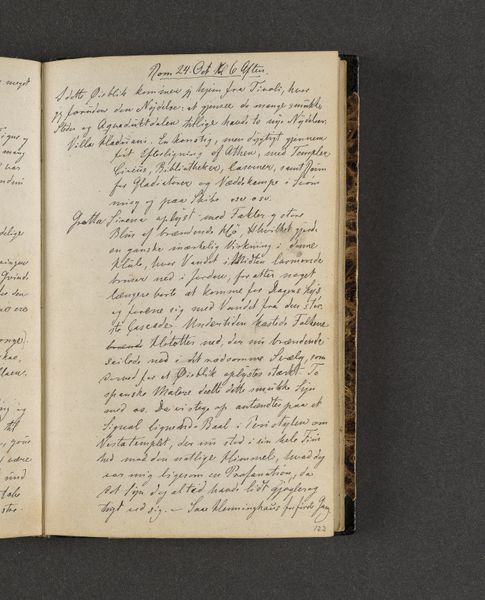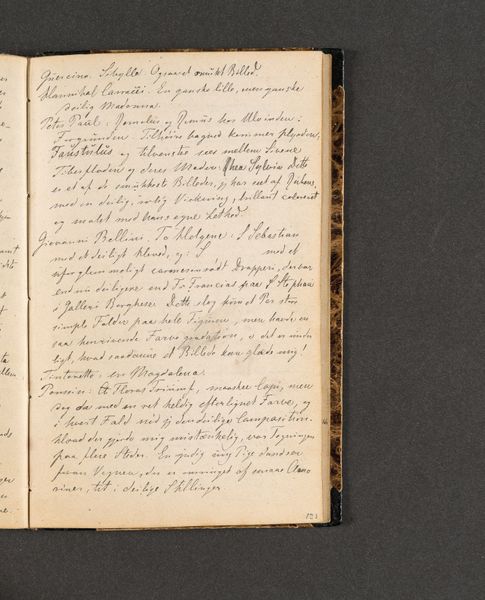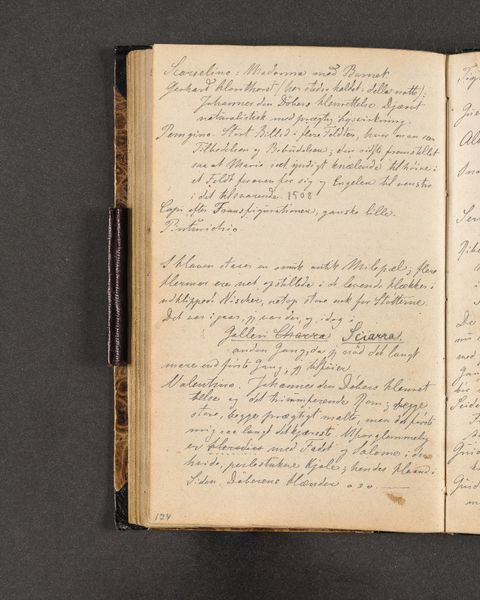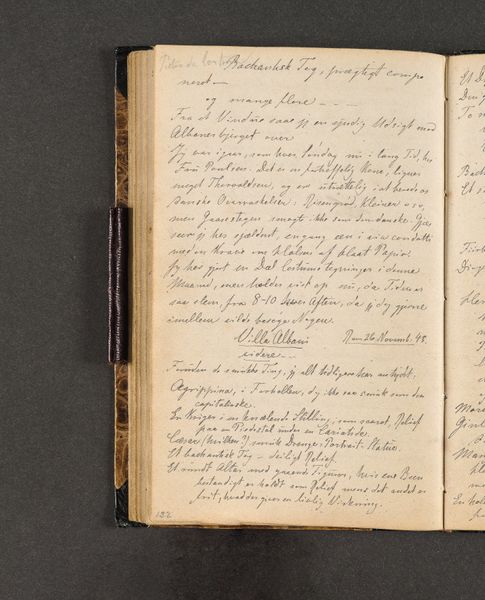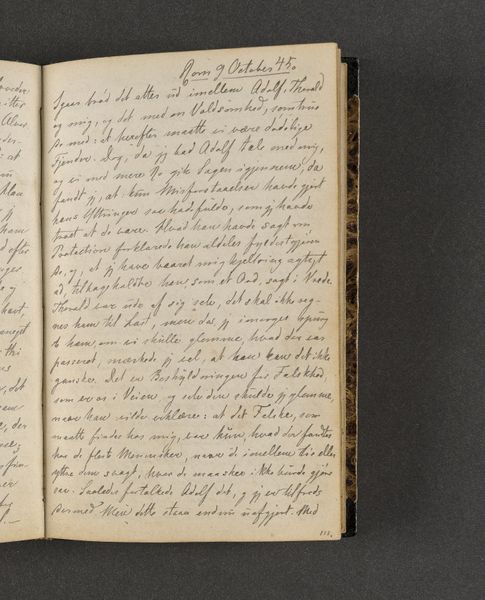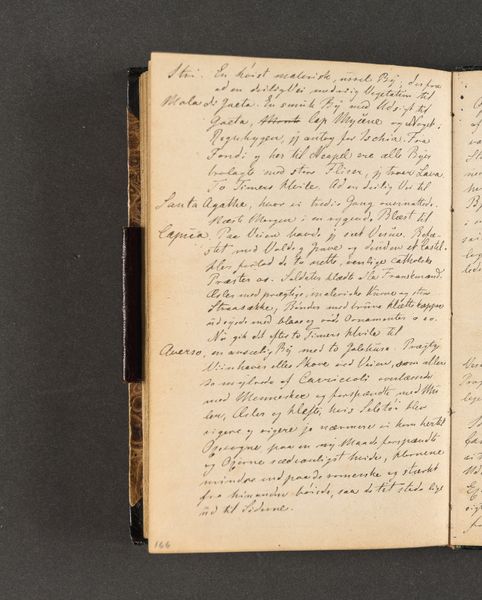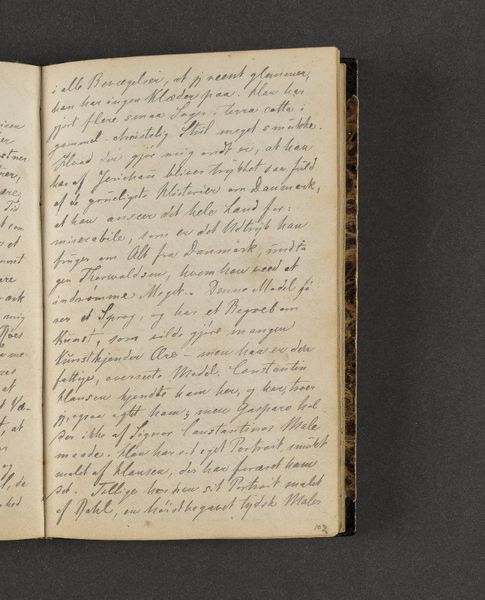
drawing, paper, pen
#
drawing
#
aged paper
#
book binding
#
medieval
#
paperlike
#
sketch book
#
personal journal design
#
paper
#
personal sketchbook
#
journal
#
romanticism
#
sketchbook drawing
#
pen
#
sketchbook art
#
design on paper
Dimensions: 161 mm (height) x 103 mm (width) x 11 mm (depth) (monteringsmaal)
Curator: Looking at this artwork, what immediately strikes you? Editor: There’s an intimacy here, a sense of unfiltered thought. It feels like sneaking a peek into someone's personal world. Curator: Indeed. We're looking at "Rejsedagbog," or "Travel Journal," a drawing made with pen on paper by Johan Thomas Lundbye in 1845. It's held here at the SMK, Statens Museum for Kunst. Considering its origins, where do you see it fitting into a broader context? Editor: Its creation is deeply tied to the socio-political climate. Travel journals weren’t just about documenting sights. They were tools of exploration and instruments that shaped the Danish national identity. I would suggest the Romantics looked outward, geographically and inward, towards subjectivity in identity, particularly how this might relate to nationality in a tumultuous Europe. Curator: Precisely. Lundbye, during this time, played a vital public role with his imagery; it speaks of art's impact on national narratives and the political implications that derive from Romanticism’s inward look. Note how Lundbye writes directly into his journal in his own hand in Danish—are these observations important given your emphasis on this journal as a component of national identity? Editor: I’d argue yes! The casual note taking helps personalize his encounter of Rome and Italy as he documented Raphael’s pieces and the Monastery gate that apparently moved Michelangelo—we see his political consciousness taking root. The quick script with travel notes serves to capture both high brow artwork observations as well as everyday records—perhaps, similar to our journal notes, it's meant to reflect and not to be a finalized work? Curator: It allows for a uniquely unfettered voice. Its raw, immediate quality highlights an unvarnished interaction. Looking through Lundbye's work in a collection, "Rejsedagbog" feels very intimate and unpolished when put against the finished aesthetic promoted within the galleries that house the national collection. Editor: Exactly. That tension—between the sketch and the "final work" creates a palpable rawness, almost discomfort. Thank you, the next time I see one of these exhibited, I’ll reflect further on its positionality as personal yet publicly accessible artefact! Curator: And thank you, understanding "Rejsedagbog" better underscores the connection of national identity, art and its impact during times of exploration and upheaval.
Comments
No comments
Be the first to comment and join the conversation on the ultimate creative platform.

